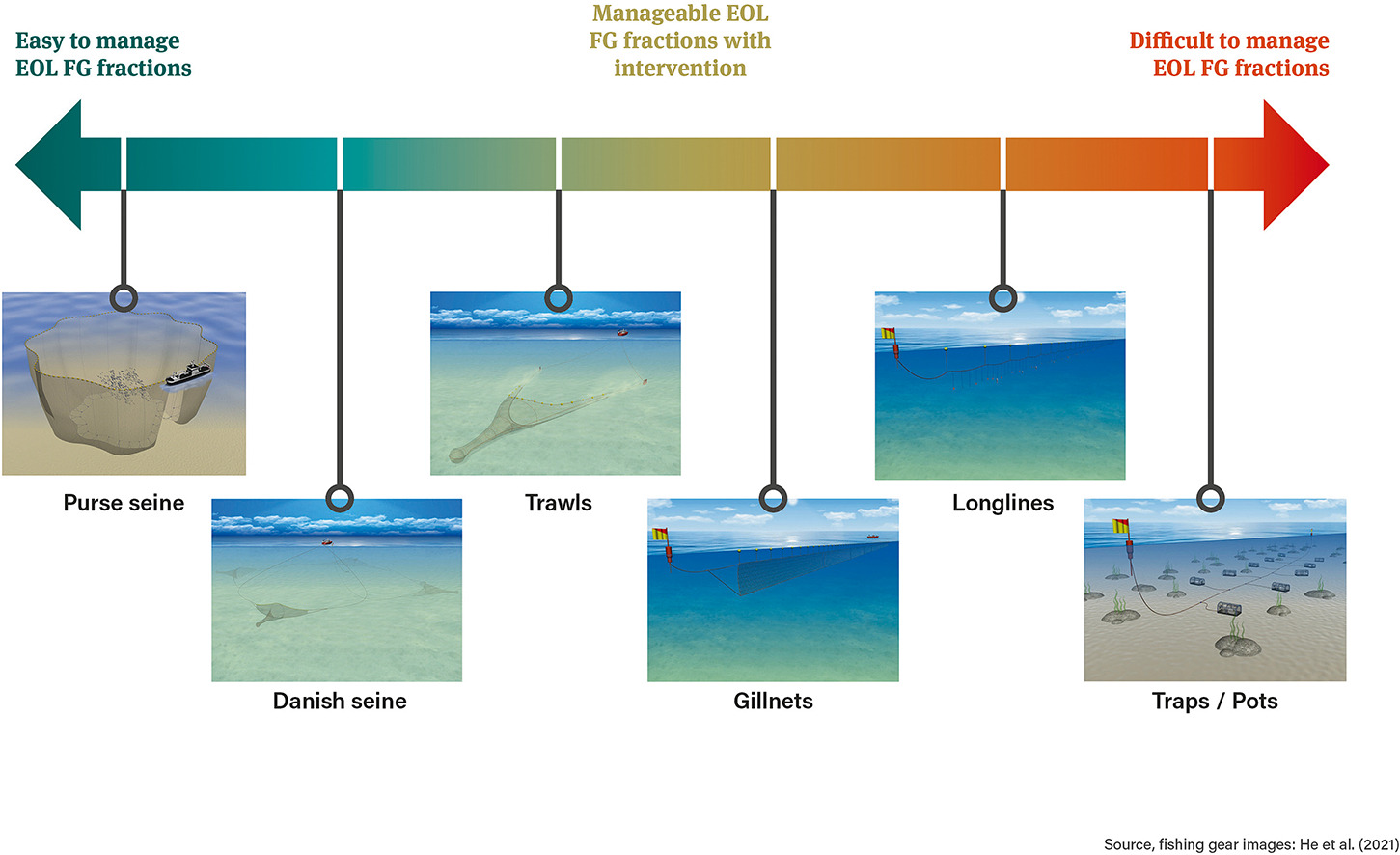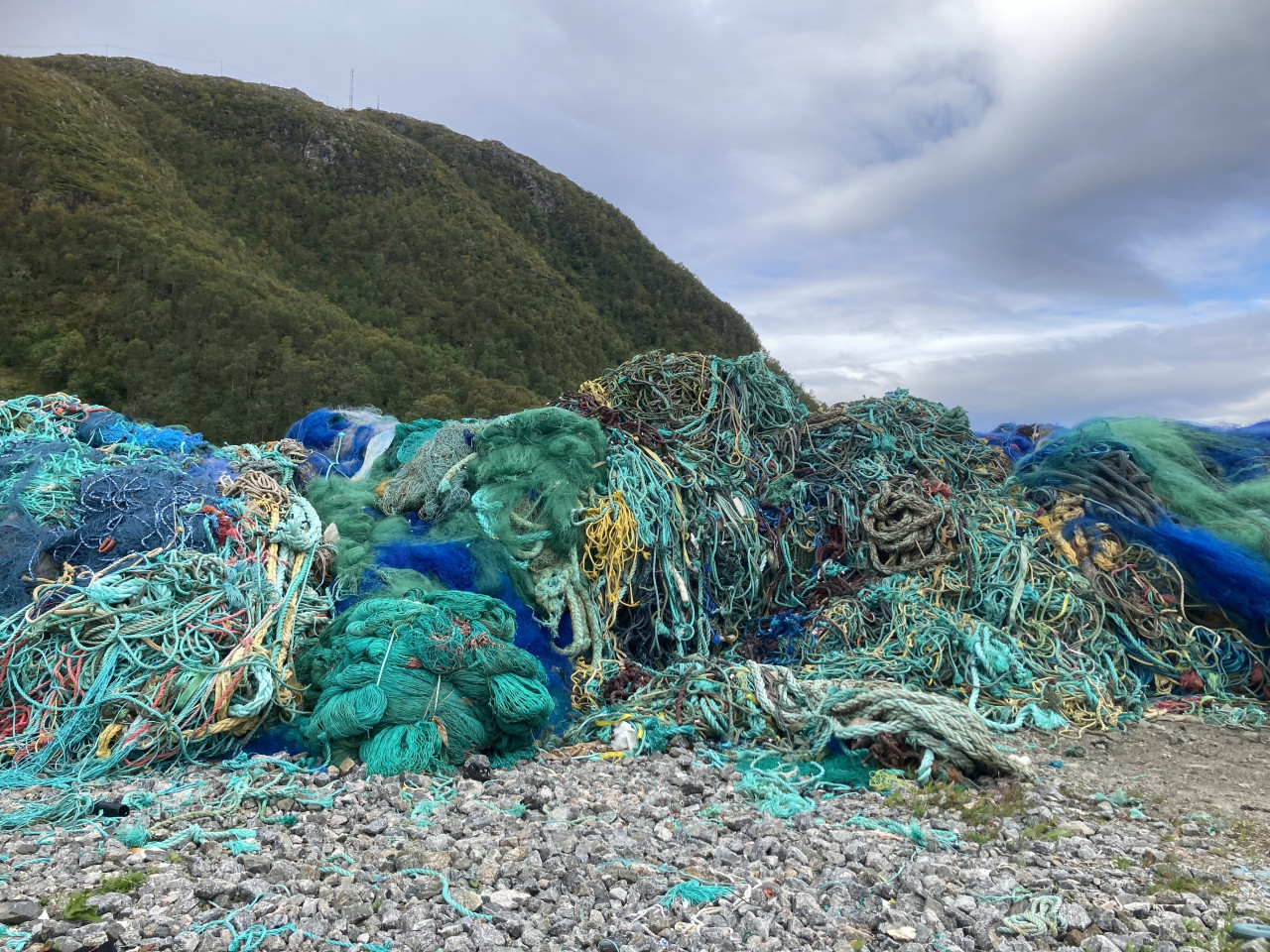Abandoned, lost, or otherwise discarded fishing gear is one of the most harmful types of marine litter globally, causing irreversible damage to ocean life and ecosystems. Therefore, global and regional policies are currently being designed and implemented to limit the influx of fishing gear into the marine environment, emphasizing the importance of circular end-of-life management of fishing gear. This study compares the end-of-life circularity potential of the six most used commercial fishing gears in Norway to identify how the heterogeneity of gears impacts their management alternatives. The main findings of the multi-criteria decision analysis (MCDA) applied in this study are that considering the economic and environmental sustainability, as well as technological feasibility of the gears' end-of-life management, purse seines have the most significant circularity potential, followed by trawls and Danish seines, while gillnets, longlines, and traps and pots are most challenging to manage according to circularity principles. Finally, some policy implications of these findings are discussed, considering especially the role of the Extended Producer Responsibility policy in the accommodation for fishing gears' circularity.

The results from this study can be applied to management strategies as a response to policies that require increased EOL circularity of FGs, or even contribute to the development of knowledge-based policies to sustainably manage FG.
Read the entire article in the Marine Pollution Bulletin.
